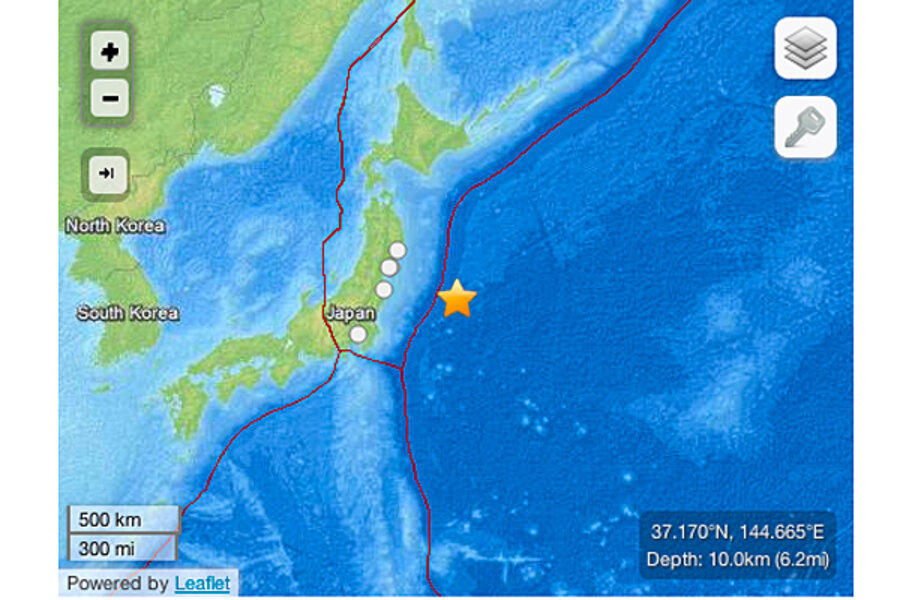Japan earthquake: 7.3-magnitude temblor rattles Japan; no reports of damage
Loading...
| Tokyo
An earthquake of magnitude 7.3 struck early Saturday off Japan's east coast, the U.S. Geological Survey said, triggering small tsunamis but causing no apparent damage.
Japan's meteorological agency said the quake was an aftershock of the magnitude 9.0 earthquake and tsunami that struck the same area in 2011, killing about 19,000 people and devastating the Fukushima Dai-Ichi nuclear power plant.
Tsunamis of up to 40 centimeters (15 inches) were reported Saturday at four areas along the coast, but a tsunami advisory was lifted less than two hours after the quake.
Japanese television images of harbors showed calm waters. The quake hit at 2:10 a.m. Tokyo time (1710 GMT) about 290 kilometers (170 miles) off Fukushima, and it was felt in Tokyo, some 300 miles (480 kilometers) away.
"It was fairly big, and rattled quite a bit, but nothing fell to the floor or broke. We've had quakes of this magnitude before," Satoshi Mizuno, an official with the Fukushima prefectural government's disaster management department, told The Associated Press by phone. "Luckily, the quake's center was very far off the coast."
Mizuno said the operator of the troubled Fukushima plant, Tokyo Electric Power Co., said no damage or abnormalities have been found.
Japan's meteorological agency issued a 1-meter (3-foot) tsunami advisory for a long stretch of Japan's northeastern coast, and put the quake's magnitude at 7.1. The U.S. Pacific Tsunami Warning Center did not post warnings for the rest of the Pacific.
The meteorological agency reported tsunamis of 40 centimeters in Kuji city in Iwate prefecture and Soma city in Fukushima, as well as a 20-centimeter tsunami at Ofunato city in Iwate and a 30-centimeter tsunami at Ishinomaki in Miyagi prefecture.
All of Japan's 50 nuclear reactors remain offline as the government decides whether they meet more stringent requirement enacted after the 2011 quake, which triggered multiple meltdowns and massive radiation leaks at the Fukushima plant about 250 kilometers (160 miles) northeast of Tokyo.
A string of mishaps this year at the Fukushima plant has raised international concerns about the operator's ability to tackle the continuing crisis.
Nuclear Regulation Authority Chairman Shinichi Tanaka has scheduled a Monday meeting with Tokyo Electric's president to seek solutions to what he says appear to be fundamental problems.







